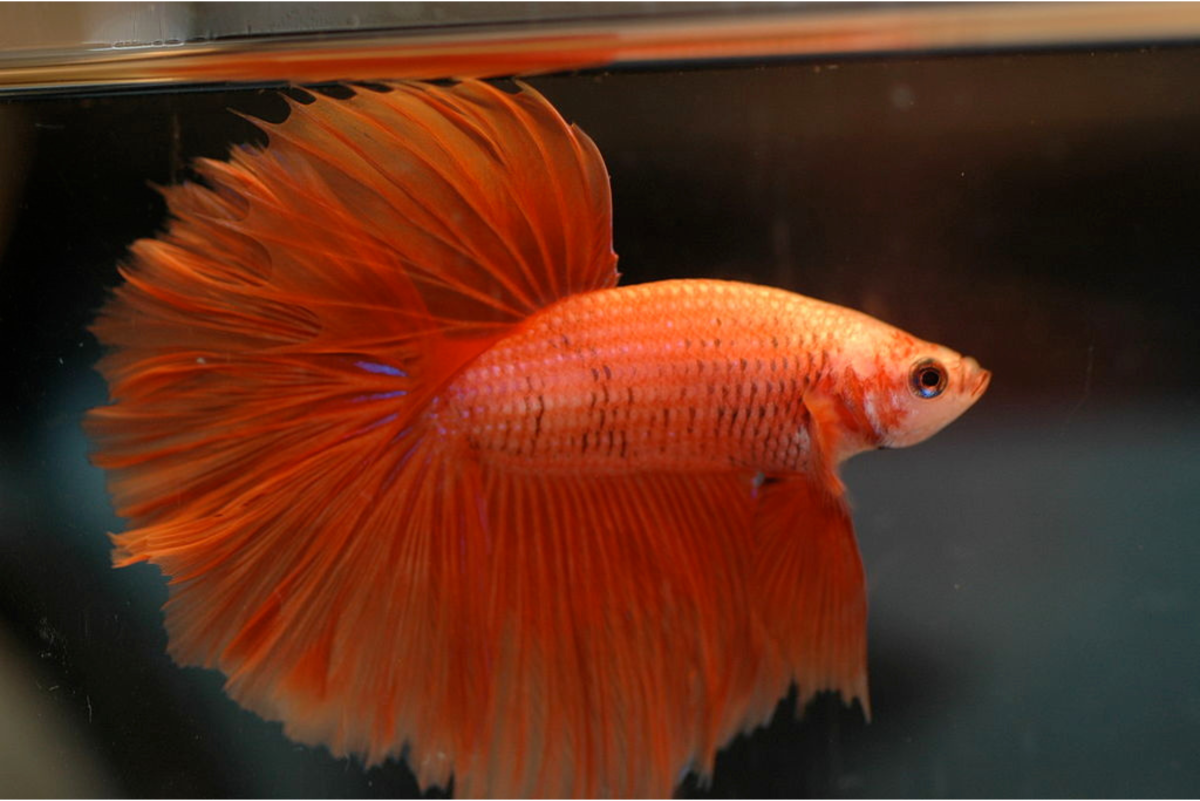Contents
- Factors to Consider when Choosing a Betta Fish
- Setting Up the Ideal Betta Fish Aquarium
- Feeding and Nutrition for Betta Fish
- Ensuring Optimal Betta Fish Health
- Breeding Betta Fish: Recommendations and Considerations
- Betta Fish Tankmates: Compatibility and Care
- Common Misconceptions about Betta Fish
- Betta Fish Sources: Pet Stores vs. Breeders
- The Importance of Betta Fish Enrichment
- Educating Yourself on Betta Fish Care
Are you looking to add a stunning centerpiece to your home aquarium? Look no further than the beautiful and vibrant betta fish! With their dazzling colors and unique personalities, betta fish are a popular choice for fish enthusiasts. However, choosing the right betta fish for your home aquarium can be a daunting task. From tail types to temperament, there are several factors to consider. In this article, we will explore the different aspects of betta fish selection, ensuring that you make an informed decision and provide the best possible environment for your new aquatic friend. So, let’s dive into the world of betta fish and discover the perfect addition to your home aquarium.
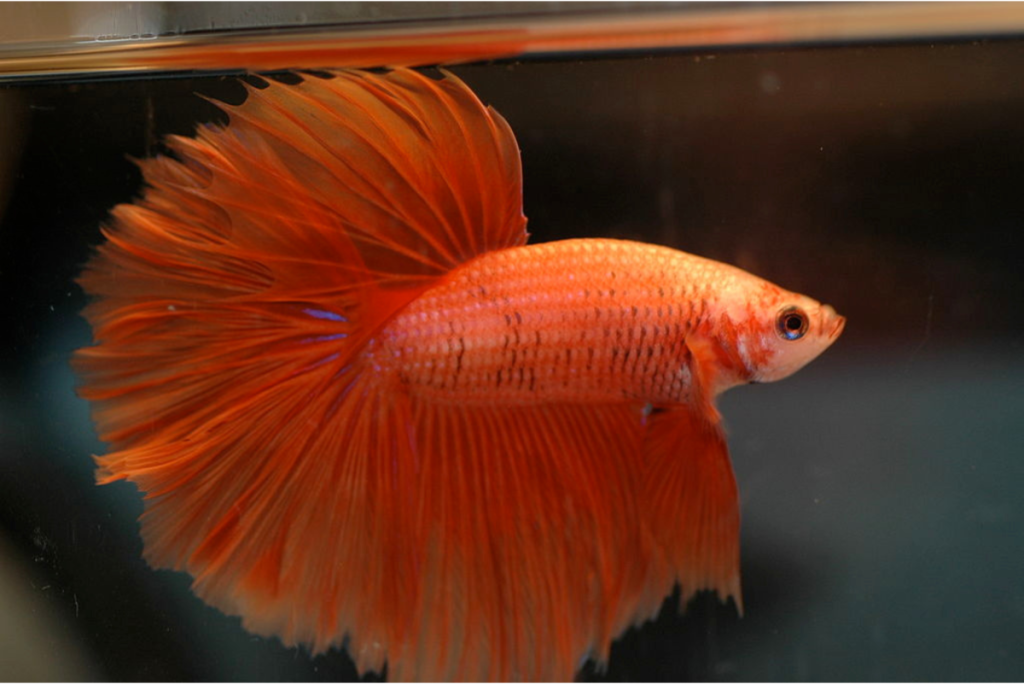
Factors to Consider when Choosing a Betta Fish
Type and Species
When it comes to choosing a betta fish, the first factor to consider is the type and species. Betta fish, also known as Siamese fighting fish, come in different types and species, each with its own unique characteristics. Some common types include veil tail, crowntail, halfmoon, plakat, and double tail, just to name a few. Each type has its own distinct fin shape and size, as well as body proportions. Additionally, betta fish can be categorized into different species, such as Betta splendens or Betta imbellis. Depending on your preferences and the desired appearance of your aquarium, you can choose the type and species that best suits your taste.
Color and Fin Varieties
Betta fish are known for their vibrant colors and stunning fin varieties. From bold and bright hues like red, blue, and yellow, to more subtle and pastel shades, the choices are vast. Each color variety can create a unique and eye-catching display in your aquarium. Additionally, betta fish have different fin varieties, including round, rosetail, spade, and butterfly. The fin variety you choose can add another dimension of beauty to your aquarium. Consider the colors and fin varieties that appeal to you and select a betta fish that matches your aesthetic preferences.
Temperament and Compatibility
Another important factor to consider when choosing a betta fish is its temperament and compatibility with other fish. Betta fish are known for their aggressive nature, especially males. They are territorial and will often fight with other male bettas. However, female bettas are generally more sociable and can be kept in groups or with other non-aggressive fish. It’s crucial to consider the temperament and compatibility of betta fish with the other inhabitants of your aquarium. Avoid keeping multiple male bettas together unless you have a large enough tank with proper dividing structures. Always research and ensure that the fish you plan to keep with your betta are compatible to prevent any potential conflicts or stress.
Size and Prerequisites
The size of the betta fish and the necessary prerequisites are important factors to consider for the well-being of your pet. Betta fish typically grow to around 2-3 inches in length, so it’s crucial to provide them with an appropriate tank size. A larger tank allows for better swimming space and minimizes stress on the betta fish. The recommended minimum tank size for betta fish is around 5 gallons, although larger tanks are always better. In addition to tank size, betta fish also have specific needs when it comes to water temperature, pH level, and filtration. It’s important to research and understand these prerequisites to create a suitable environment for your betta fish.
Lifespan and Maintenance
The lifespan and maintenance requirements of betta fish are crucial factors to consider when bringing them into your home aquarium. On average, betta fish can live for 2-4 years, although some well-cared-for bettas have been known to live up to 7 years. Proper care and maintenance are essential for ensuring the longevity of your betta fish. This includes regular feeding, monitoring water parameters, conducting partial water changes, and providing a clean and stimulating environment. It’s important to be prepared to invest time and effort into the care of your betta fish to ensure their well-being and longevity.
Setting Up the Ideal Betta Fish Aquarium
Tank Size and Shape
When setting up an ideal betta fish aquarium, the tank size and shape play a significant role in the well-being of your betta. As mentioned earlier, a minimum tank size of 5 gallons is recommended for betta fish, although larger is always better. The tank should provide sufficient swimming space for the betta and allow for the installation of necessary equipment, like filters and heaters. In terms of shape, rectangular or square tanks are generally the best choice for bettas, as they provide more swimming space and better surface area for gas exchange. Avoid tall or narrow tanks, as they limit the betta’s ability to swim freely.
Filtration and Water Parameters
Proper filtration and maintaining balanced water parameters are essential for the health and well-being of your betta fish. A good filtration system helps to remove impurities and keep the water clean. When selecting a filter, opt for a gentle filter with adjustable flow, as betta fish prefer calm water. Additionally, it’s important to maintain suitable water parameters, such as temperature, pH level, and ammonia levels. The ideal water temperature for betta fish is around 78-80°F (25-27°C), with a slightly acidic to neutral pH of 6.5-7.5. Regularly test the water parameters and make necessary adjustments to ensure a stable and healthy environment for your betta fish.
Heating and Lighting
Betta fish are tropical fish and require a stable and appropriate water temperature. To maintain the ideal temperature for your betta, a heater is essential, especially if you live in a colder climate. Choose a reliable aquarium heater that can maintain the desired temperature range consistently. It’s also important to provide suitable lighting for your betta fish. While bettas do not require intense lighting, a gentle LED light or a natural daylight spectrum bulb can enhance the visual appeal of your aquarium and provide a consistent day-night cycle for your betta fish.
Decorations and Substrate
Creating an aesthetically pleasing and stimulating environment for your betta fish includes carefully selecting decorations and substrate for your aquarium. Betta fish enjoy exploring and hiding, so providing suitable decorations and structures is essential. Opt for soft and smooth decorations that won’t harm their delicate fins, such as silk or live plants, driftwood, and caves. Avoid sharp or rough materials that could potentially injure the betta fish. As for substrate, betta fish prefer a sandy or gravel substrate as it mimics their natural habitat. However, make sure the substrate is not too fine to prevent any potential ingestion issues.
Plants and Hideouts
Live plants not only add beauty to your betta fish aquarium but also provide numerous benefits for the fish. They serve as hiding spots, enhance water quality by absorbing nitrates, and create a natural environment that bettas find comforting. Some suitable live plants for betta fish include Java fern, Anubias, Amazon sword, and Java moss. These plants are relatively easy to care for and can thrive in a betta fish aquarium. It’s important to research the specific care requirements for each plant to ensure optimal health and growth. Additionally, providing various hideouts with plants and decorations helps to reduce stress and provide a sense of security for your betta fish.
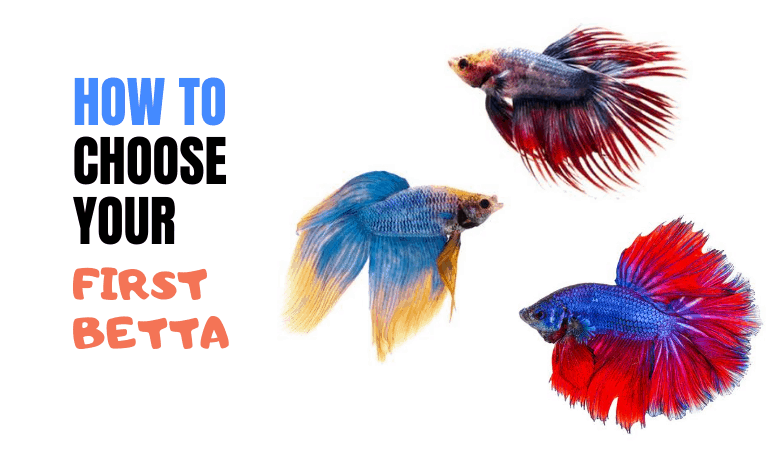
Feeding and Nutrition for Betta Fish
General Dietary Requirements
To keep your betta fish healthy and thriving, it’s important to fulfill their dietary requirements. Betta fish are omnivorous, which means they eat both meaty and plant-based foods. Their diet should consist of a balance of protein, vitamins, and minerals to meet their nutritional needs. In the wild, bettas feed on small insects, larvae, and plant matter. Replicating this diet in captivity is essential for their overall health. Additionally, it’s crucial to provide a varied diet to prevent dietary deficiencies and boredom.
Types of Betta Fish Food
There are various types of betta fish food available in the market, ranging from dry pellets to frozen and live foods. High-quality pellets specifically formulated for betta fish are a staple in their diet. Look for pellets that include a variety of ingredients, such as shrimp, fish, and plant matter. Frozen or live foods, such as bloodworms, brine shrimp, and daphnia, can be offered as occasional treats for added nutritional value. It’s important to remember that live foods should be properly sourced and free from any potential contaminants.
Feeding Frequency and Quantity
Establishing a regular feeding schedule and controlling the quantity of food is crucial for betta fish health. Feed your betta fish small amounts of food 2-3 times a day, rather than a large meal once a day. This helps to prevent overfeeding and keeps the fish’s digestive system healthy. Bettas have small stomachs and can easily overeat, leading to bloating and other health issues. Offer a few pellets at a time or the equivalent portion of other foods, and observe how much your betta consumes within a few minutes. Adjust the quantity accordingly to ensure they eat what they need without excessive waste.
Avoiding Overfeeding
Overfeeding is one of the most common mistakes made by betta fish owners. It’s important to avoid overfeeding to prevent obesity and related health issues. Remember that betta fish have a slower metabolism compared to other fish, so they don’t require constant feeding. Uneaten food can quickly decompose and pollute the water, leading to poor water quality and potential health problems. As a general rule, offer the amount of food that your betta can consume within 2-3 minutes. If there is any leftover food, remove it promptly to maintain water cleanliness.
Supplementary and Treat Foods
In addition to the staple diet of pellets and occasional live or frozen foods, betta fish can benefit from supplementary and treat foods. Supplementary foods, such as freeze-dried or dehydrated alternatives, can provide additional nutritional variety. These can include options like daphnia, tubifex worms, or mosquito larvae. Treat foods are not meant to replace the regular diet but are given as occasional rewards or for enrichment purposes. Examples of treat foods for betta fish include small pieces of fruits (without seeds or skin) like banana or watermelon, as well as brine shrimp nauplii. Treats should be offered sparingly and in small quantities to avoid digestive issues.
Ensuring Optimal Betta Fish Health
Water Quality and Regular Maintenance
Maintaining optimal water quality is paramount for the health and well-being of your betta fish. Regular water changes and cleaning are necessary to remove accumulated waste, toxins, and pollutants. Aim to conduct partial water changes of around 25-30% every week to maintain good water quality. Additionally, use a siphon or a gravel vacuum to remove debris from the substrate during water changes. Keep an eye on the water clarity and conduct additional water changes if necessary. Establishing a consistent maintenance routine helps to create a clean and healthy environment for your betta fish.
Monitoring Water Chemistry
Monitoring and maintaining appropriate water chemistry is essential for the overall health of your betta fish. Regularly test the water parameters, including temperature, pH level, ammonia, nitrite, and nitrate levels. Use reliable and accurate test kits to ensure precise readings. Monitoring ammonia and nitrite levels is particularly important, as high levels can be harmful and toxic to betta fish. Aim for a pH level between 6.5-7.5, ammonia and nitrite levels at zero ppm, and nitrate levels below 40 ppm. Consistent monitoring and maintaining suitable water chemistry are key to preventing health issues in your betta fish.
Preventing and Treating Common Diseases
Betta fish are susceptible to various diseases, just like any other fish. It’s important to be vigilant and take preventive measures to minimize the risk of diseases. Maintaining good water quality, providing a balanced diet, and avoiding overstocking are essential preventive measures. Additionally, it’s crucial to quarantine any new fish or plants before introducing them to your betta fish aquarium to prevent the spread of diseases. Despite preventive measures, betta fish can still fall ill. Common diseases in bettas include fin rot, ich, and fungal infections. Familiarize yourself with the signs and symptoms of common diseases and be prepared to take appropriate action, such as providing proper medications or seeking veterinary advice if needed.
Breathing and Swimbladder Problems
Breathing and swimbladder problems are common issues that can affect betta fish. The swimbladder is a specialized organ that helps fish control buoyancy and maintain proper balance. Swimbladder issues can cause symptoms like floating, sinking, or difficulty swimming in betta fish. Poor water quality, constipation, overfeeding, or physical injury can contribute to swimbladder problems. Maintaining good water quality, providing a balanced diet, and avoiding overfeeding can help prevent swimbladder issues. If your betta fish exhibits swimbladder-related symptoms, it’s important to quarantine it, monitor its condition, and potentially adjust its diet or seek veterinary advice if the condition persists.
Recognizing and Addressing Stress
Stress is a common issue that can have serious implications for betta fish health. Stress in betta fish can result from various factors, including inadequate tank size, aggressive tankmates, poor water quality, sudden environmental changes, or lack of hiding spots. It’s important to observe your betta fish for signs of stress, such as loss of appetite, color fading, excessive hiding, or frequent flaring. Providing a suitable environment with proper tank size, compatible tankmates, and adequate hiding spots helps reduce stress. Maintaining consistent water parameters and ensuring a calm environment can also contribute to the overall well-being and stress reduction in your betta fish.
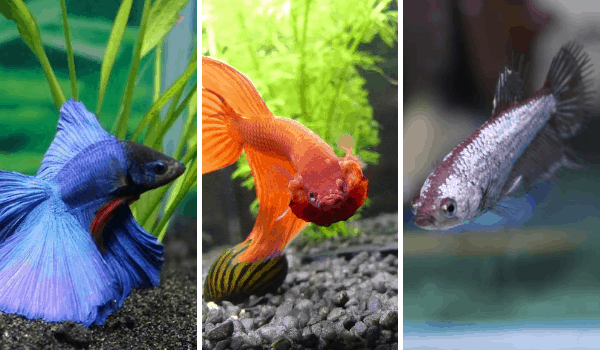
Breeding Betta Fish: Recommendations and Considerations
Selective Breeding
Breeding betta fish is a complex and rewarding endeavor. Selective breeding allows betta enthusiasts to develop and enhance specific traits, patterns, and colors in their bettas. When considering breeding betta fish, it’s important to research and understand the genetic traits and inheritance patterns associated with betta breeding. This knowledge will help you make informed decisions and produce desired offspring.
Breeding Process and Pairing
The breeding process involves selecting compatible breeding pairs and providing suitable breeding conditions. Choose healthy and mature bettas for breeding, ensuring that they are free from any diseases or deformities. The breeding tank should be spacious and equipped with a tightly fitted lid to prevent jumpers. Provide hiding spots like plants or spawning mops to encourage the pair to spawn. Once the pair is introduced to the breeding tank, they may engage in a courtship dance before the female releases eggs and the male fertilizes them. After spawning, remove the parents from the tank to prevent them from eating the eggs.
Caring for the Fry
After the eggs are laid, they typically hatch within 24-48 hours. The fry are initially unable to swim and rely on their yolk sac for nourishment. As they grow, they become free-swimming and require specialized care. Feed the fry infusoria or commercially available fry food in tiny and frequent portions. Ensure the water quality remains pristine, conduct regular water changes, and monitor the temperature to promote healthy growth. Gradually introduce larger food particles as the fry grow, and separate them into larger tanks when they reach an appropriate size to prevent overcrowding.
Tips for Success
Breeding betta fish successfully requires dedication, knowledge, and patience. Here are some tips to increase your chances of success:
- Ensure the breeding pair is healthy and free from any diseases or deformities.
- Research the desired traits and genetic inheritance patterns to plan your breeding program.
- Provide a suitable breeding tank with hiding spots and appropriate water conditions.
- Carefully monitor the breeding process and remove the parents once spawning is complete.
- Regularly monitor the fry, maintain optimal water quality, and provide appropriate food as they grow.
- Separate the fry into larger tanks to prevent overcrowding and aggression.
Responsibilities and Challenges
Breeding betta fish comes with responsibilities and challenges. It requires time, effort, and resources to provide proper care for the breeding pair and the resulting fry. You must be prepared to invest in equipment, such as spacious breeding tanks, heaters, filters, and appropriate food for the growing fry. Additionally, breeding bettas can be emotionally challenging, as not every spawn will be successful, and the process may require multiple attempts. It’s important to be patient, learn from each experience, and continually improve your breeding techniques.
Betta Fish Tankmates: Compatibility and Care
Fish Species to Avoid
Choosing suitable tankmates for your betta fish is crucial to maintain a harmonious community aquarium. While betta fish can coexist with certain fish species, there are some species to avoid due to potential aggression or compatibility issues. Fish species that resemble bettas, such as guppies or male fancy guppies, may trigger aggression and territorial behavior. Avoid fin-nipping species like tiger barbs or aggressive fish like cichlids. It’s essential to research the temperament, size, and behavior of potential tankmates to ensure a peaceful coexistence.
Suitable Tankmates for Betta Fish
Despite their reputation for aggression, betta fish can coexist with certain species in a community aquarium. When selecting tankmates, opt for calm, non-aggressive fish that inhabit different areas of the tank. Some suitable tankmates for betta fish include small schooling fish like neon tetras, peaceful bottom-dwellers like corydoras catfish, or non-aggressive invertebrates like cherry shrimp or snails. Always monitor the behavior and compatibility of tankmates, as individual fish may exhibit different personalities.
Proper Introduction and Quarantine
To ensure the compatibility of tankmates with your betta fish, it’s important to follow proper introduction and quarantine procedures. Before introducing any new fish, quarantine them in a separate tank for a few weeks to monitor their health and prevent the spread of diseases. This helps prevent potential infection or stress to your betta fish. When introducing tankmates to the betta’s aquarium, carefully acclimate them to the temperature and water parameters. Observe the behavior and interaction between the betta and the new tankmates for any signs of aggression or stress. If aggression becomes an issue, be prepared to provide appropriate housing or remove the incompatible tankmates.
Maintaining Harmony in the Aquarium
Maintaining harmony in a betta fish community aquarium requires careful observation and intervention if necessary. Keep an eye out for any signs of aggression, flaring, or fin nipping. If conflicts occur, providing additional hiding spots or rearranging the aquarium decorations can help establish territories and reduce aggression. Ensure that all tankmates have ample swimming space and access to their preferred areas. Additionally, maintain optimal water quality and ensure a well-balanced diet for all the fish. By creating a stress-free and harmonious environment, you can maximize the compatibility and well-being of your betta fish and their tankmates.
Monitoring Aggression
Aggression can occasionally arise in a betta fish community aquarium, even with suitable tankmates. It’s important to monitor the behavior and aggression levels of your betta and other fish in the tank. Excessive aggression, fin damage, or constant chasing can indicate stress or incompatibility. If aggression becomes persistent, it might be necessary to separate the betta fish or rehome the incompatible tankmates. Always prioritize the well-being and safety of your fish, and be prepared to make adjustments to maintain a peaceful and thriving community aquarium.
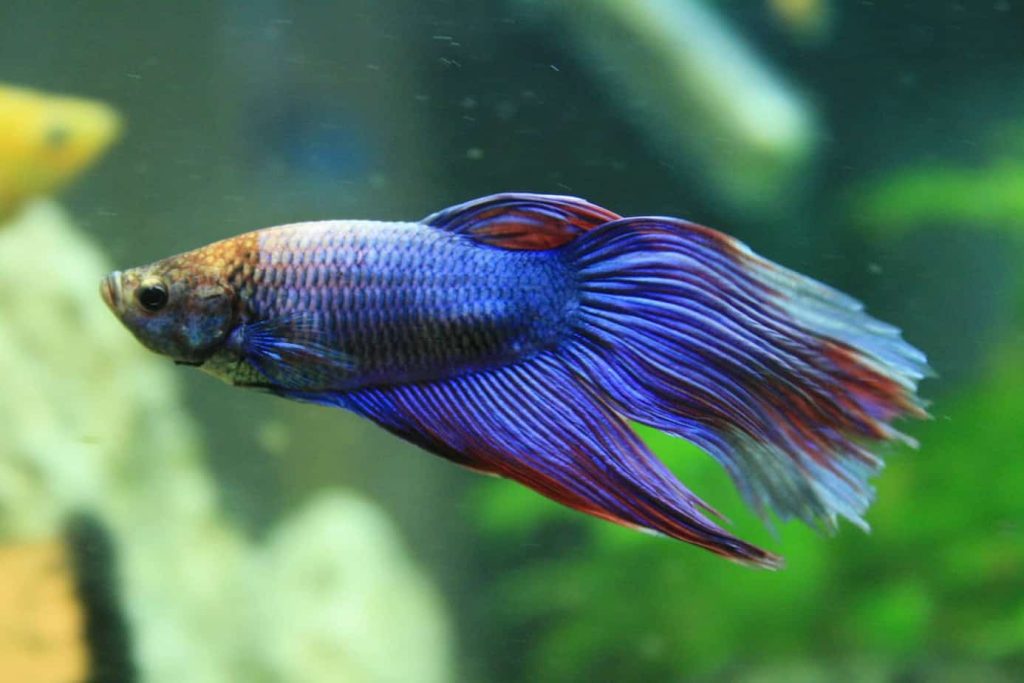
Common Misconceptions about Betta Fish
Betta Fish Are Low-Maintenance
One common misconception about betta fish is that they are low-maintenance pets. While betta fish are indeed hardy and can tolerate less than ideal conditions, they still require proper care and attention. Betta fish need a suitable tank size, a properly balanced diet, clean water, and regular maintenance. Neglecting these requirements can lead to stress, health problems, and a shortened lifespan. It’s important to understand that betta fish, like any other living creature, require responsible care and commitment.
Betta Fish Can Thrive in Small Containers
Another misconception is that betta fish can thrive in small containers or bowls. While betta fish can survive in small volumes of water due to their labyrinth organ, this is far from providing an ideal living environment. Keeping betta fish in small containers or bowls restricts their ability to swim and explore, leading to stress and limited mental and physical stimulation. Betta fish should be kept in appropriately sized aquariums with proper filtration and heating to ensure optimal health and well-being.
Betta Fish Prefer Dirty Water
Contrary to popular belief, betta fish do not prefer dirty water. While they can tolerate suboptimal conditions for shorter periods, it does not mean they thrive in dirty water. Betta fish, like any other fish, require clean and well-maintained water to avoid stress and health issues. Regular water changes, proper filtration, and monitoring of water parameters are essential for the longevity and well-being of betta fish. Clean water promotes a healthier immune system and overall better quality of life.
Betta Fish Need No Companionship
Betta fish are often mistakenly assumed to be solitary fish that prefer to live alone. While it is true that male bettas are highly territorial and should not be housed with other males, they can still benefit from compatible tankmates. Female bettas can be kept in small groups or with other non-aggressive fish in a community aquarium. Social interaction and companionship can provide mental stimulation and reduce stress in betta fish. It’s important to research and carefully select suitable tankmates to ensure compatibility and minimize conflicts.
Betta Fish Can Live on Plant Roots Only
Another common misconception is that betta fish can survive solely on plant roots. While bettas do have a natural inclination to explore and rest on plant leaves, they are still omnivorous fish that require a varied diet including protein-rich foods. Plant roots, such as those of the common houseplant, can be a source of natural biofilm or small microorganisms that bettas may nibble on. However, it is not enough to sustain their nutritional needs. A balanced diet consisting of quality betta fish pellets or flakes, as well as occasional live or frozen foods, is vital for their health and proper growth.
Betta Fish Sources: Pet Stores vs. Breeders
Advantages of Buying from Pet Stores
Pet stores are a common source for purchasing betta fish. One advantage of buying from pet stores is convenience and accessibility. Pet stores usually have a range of colors and fin varieties available, making it easier to find a betta fish that meets your preferences. Additionally, pet stores often provide basic supplies and equipment needed for betta fish care, making it a one-stop shop. Buying from a pet store also allows you to personally inspect the fish and observe their behavior before making a purchase.
Advantages of Buying from Breeders
Buying betta fish from reputable breeders has its own advantages. Breeders often specialize in raising specific types or strains of betta fish, allowing you to find a wider variety of colors and fin varieties that may not be available in pet stores. Breeders also take extra care in breeding and raising their bettas, which can result in healthier and more vibrant fish. Furthermore, breeders often have valuable knowledge and advice to offer regarding betta fish care and breeding, making them a valuable resource for enthusiasts.
Quality and Health Considerations
Regardless of where you choose to buy your betta fish, it’s crucial to prioritize the quality and health of the fish. Look for fish that are active, display vibrant colors, and have intact fins. Avoid fish with torn or tattered fins, lesions, or signs of disease. Healthy betta fish should have clear eyes, a smooth body, and active behavior. If purchasing from a pet store, inquire about the store’s source of betta fish and ask about their care practices. When buying from a breeder, ensure they prioritize the health and well-being of their fish by providing appropriate care and suitable breeding conditions.
Supporting Responsible Breeding
Supporting responsible breeders and their practices helps promote the well-being and conservation of betta fish. Reputable breeders often implement breeding programs aimed at preserving and improving the genetic traits and overall health of betta fish. By purchasing from responsible breeders, you contribute to the sustainability and further development of betta fish varieties. Additionally, reputable breeders prioritize the welfare of their breeding fish and take steps to ensure proper care, housing, and socialization.
Pricing and Availability
The pricing and availability of betta fish can vary depending on whether you choose to buy from a pet store or a breeder. Pet stores generally offer betta fish at a more affordable price range, while breeders may have higher price tags, especially for rare or sought-after varieties. Availability can also vary, as pet stores tend to have a consistent stock of betta fish, while breeders may have limited quantities or specific release dates for their fish. It’s important to consider your budget and preferences when deciding where to purchase your betta fish.
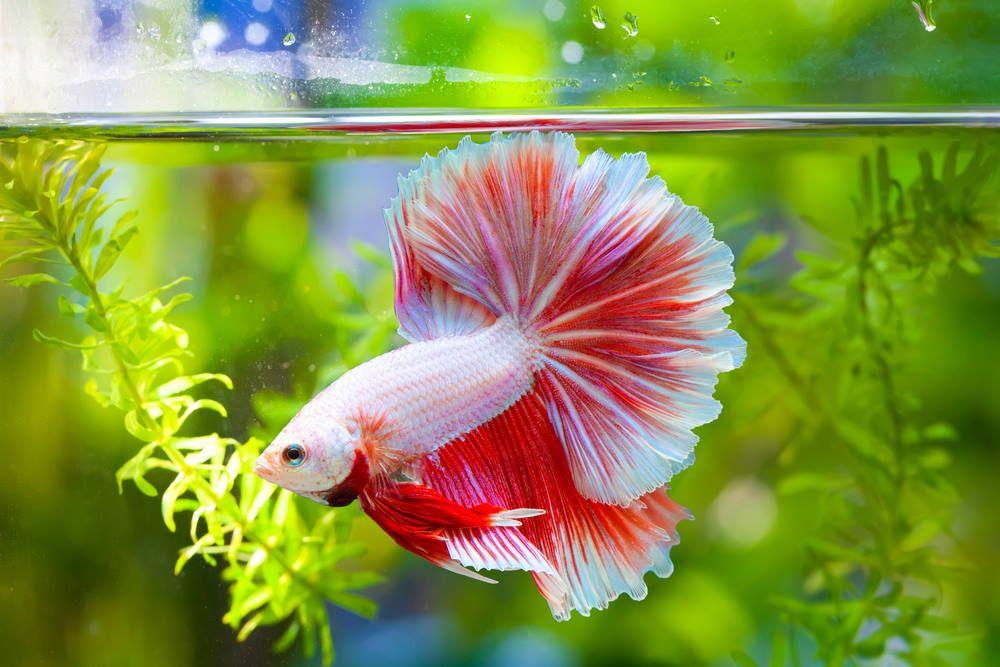
The Importance of Betta Fish Enrichment
Creating a Stimulating Environment
Providing a stimulating environment for your betta fish is crucial for their overall well-being. A stimulating environment includes a variety of decorations, hiding spots, and swimming spaces. Incorporate live plants, caves, and natural-looking ornaments to mimic their natural habitat. A well-decorated aquarium not only enhances the visual appeal but also provides mental stimulation and engagement for your betta fish.
Providing Mental Stimulation
Betta fish are intelligent creatures that benefit from mental stimulation. Incorporating enrichment activities, such as puzzle feeders or mirror toys, can help engage and challenge your betta fish. Puzzle feeders require the fish to solve a small task or manipulate an object to access their food, stimulating their problem-solving abilities. Mirror toys, when used sparingly, can provide temporary visual stimulation and spark the betta’s natural territorial response. It’s important not to overuse mirror toys or stress the fish, as excessive flaring can lead to fatigue and aggression.
Engaging Betta Fish with Toys
Toys play a significant role in providing mental and physical stimulation for your betta fish. Floating toys, such as ping pong balls or floating plants, can entice the betta fish to investigate and interact with their environment. Objects that can be pushed or moved, like miniature soccer balls or floating rings, encourage play and exercise. It’s crucial to regularly rotate and introduce new toys to prevent boredom and maintain the betta fish’s interest.
Rotating Decorations and Hideouts
Betta fish, like any other animal, benefit from environmental enrichment through novelty. Rotating the decorations and hideouts in your aquarium can prevent habituation and keep your betta fish engaged. Rearranging the placement of plants, adding new ornaments, or changing the position of hiding spots can provide a sense of novelty and exploration for your betta fish. It’s important to be mindful of their preferences and any potential stress caused by frequent changes.
Benefits of Enrichment
Enrichment for betta fish has numerous benefits. It promotes natural behaviors, reduces stress, and helps prevent boredom-related issues. Providing mental and physical stimulation can lead to a more active and engaging fish. Enrichment can also encourage natural foraging behaviors and enhance the overall quality of life for your betta fish. By incorporating enrichment activities and toys, you can create a stimulating and enriching environment for your betta fish to thrive.
Educating Yourself on Betta Fish Care
Researching and Learning from Reliable Sources
Educating yourself on betta fish care is crucial for providing the best possible care for your fish. Research and learn from reliable sources, such as books, reputable websites, or articles from experienced fishkeepers. Understanding the biology, behavior, and specific care requirements of betta fish will help you make informed decisions and prevent any potential issues. Stay up to date with the latest research and information to ensure you are providing the most optimal care for your betta fish.
Joining Online Communities and Forums
Joining online communities and forums dedicated to betta fish care can provide valuable insights and support from fellow betta enthusiasts. These communities are great platforms to ask questions, share experiences, and learn from others’ knowledge. Engaging in discussions and actively participating in these communities can expand your knowledge and help you become a more knowledgeable and confident betta fish owner.
Attending Local Fishkeeping Events
Attending local fishkeeping events, such as aquarium club meetings or fish shows, can be a great way to learn from experienced aquarists and expand your knowledge on betta fish care. These events often feature informative seminars, workshops, or demonstrations by experts in the field. You can also network and connect with fellow fishkeepers in your local community, forming valuable connections and resources.
Consulting with Aquatic Experts
If you have specific questions or concerns about the care of your betta fish, consulting with aquatic experts can provide professional advice and guidance. Local fish stores with knowledgeable staff or professional aquatic veterinarians can offer personalized insights and recommendations based on your specific circumstances. Expert advice can assist in troubleshooting any issues, addressing health concerns, or providing detailed care instructions tailored to your betta fish.
Continuing Education and Updates
Fishkeeping, including betta fish care, is a constantly evolving field. Continuing education and staying updated on the latest research, techniques, and advancements are essential for providing the best care for your betta fish. Regularly reading new publications, attending seminars or webinars, and engaging with aquatic communities help you stay informed and adapt your practices accordingly. By staying proactive and continuously enriching your knowledge, you become better equipped to provide optimal care and maintain the well-being of your betta fish.

